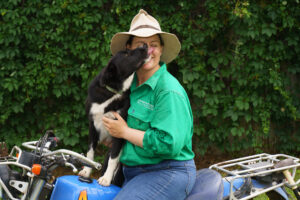Rural healthcare access: too close to the bone.
I’ve found myself in hospital eight times in the past two years for farm related injuries or illnesses linked to my life-long propensity to burn the candle at both ends. Last month, I presented to the Wesley Hospital in Brisbane with what I thought was a severed nerve in the ring finger of my right-hand complements of a *tiny* cut on my knuckle from a dog food can. At the time, I didn’t think anything of it, so I bandaged it up and carried on with the jobs at hand, but within two days I couldn’t move my finger.
Upon closer inspection by the emergency doctor, it turned out to be the start of an acute infection requiring hospitalisation and intravenous drug treatment for four days. To be honest, I initially thought the doctor’s orders were overkill in circumstances where I was sent home from a different hospital late last year after only a few hours (with the all clear), following a kick to the head by a cow. However, the severity of the situation hit home once the doctor explained that any infection in joints, or close to bone where there is limited flesh, are treated as high priority due to the risk of the infection spreading to the bone – and subsequently requiring limb amputation in worst case scenarios.
It was surreal to think just how quickly my situation could have turned, and with something so incidental as a clean cut from a dog food can.
Somewhat serendipitously, during my hospital stay I happened to have control of the RRR Women (formerly Queensland Rural, Regional & Remote Women’s Network) Instagram and Facebook accounts to share ‘a day in the life of a RRR Woman’. As I shared the view from my hospital bed, I took the opportunity to ask the RRR Women community what more needed to be done to improve health in rural and regional areas in circumstances where my (now regular) trips to the hospital often made me reflect just how fortunate I am to have such ready access to medical services given the location of my family property. Most individuals on the land are not so lucky, so reliance on their own skills, local practitioners who are often hours away, or the Royal Flying Doctor’s Service and Angel Flight are crucial.
The responses received to my query would not surprise many in the bush, but included:
- the long-discussed fact that traditional healthcare models do not work, and that the Doctors Without Borders method should be explored for servicing rural and regional areas.
- that improved access to telehealth and telehealth education is required.
- that there should be improved training pathways and greater remuneration or benefits for nurse practitioners, including the creation of nurse practitioners’ positions in rural areas (with experience or training in pre-natal, post-natal, and childbirth care).
- the creation of a dedicated visa option to encourage overseas trained nurses to work in rural and regional areas.
- that rural graduates should be encouraged to the bush through greater remuneration and accommodation benefits.
- the establishment and continued funding of more medical buses, such as the Heart of Australia.
Whilst I may be preaching to the choir in sharing these ideas with the readers of this column, I’m a firm believer that many voices – and indeed getting ideas in print – can create change. So, whilst I open each can of dog food for my beloved Harry ever so gingerly these days; I’m now far less timid in sharing the ideas so many rural women told me in respect of what rural and regional families need to improve their access to healthcare – to all who will listen.
Author: Caitlin McConnel is an agribusiness lawyer at Clayton Utz, a sixth-generation farmer, and Chair of the Future Farmers Network.
Photo: Caitlin with her border collie, Harry.
